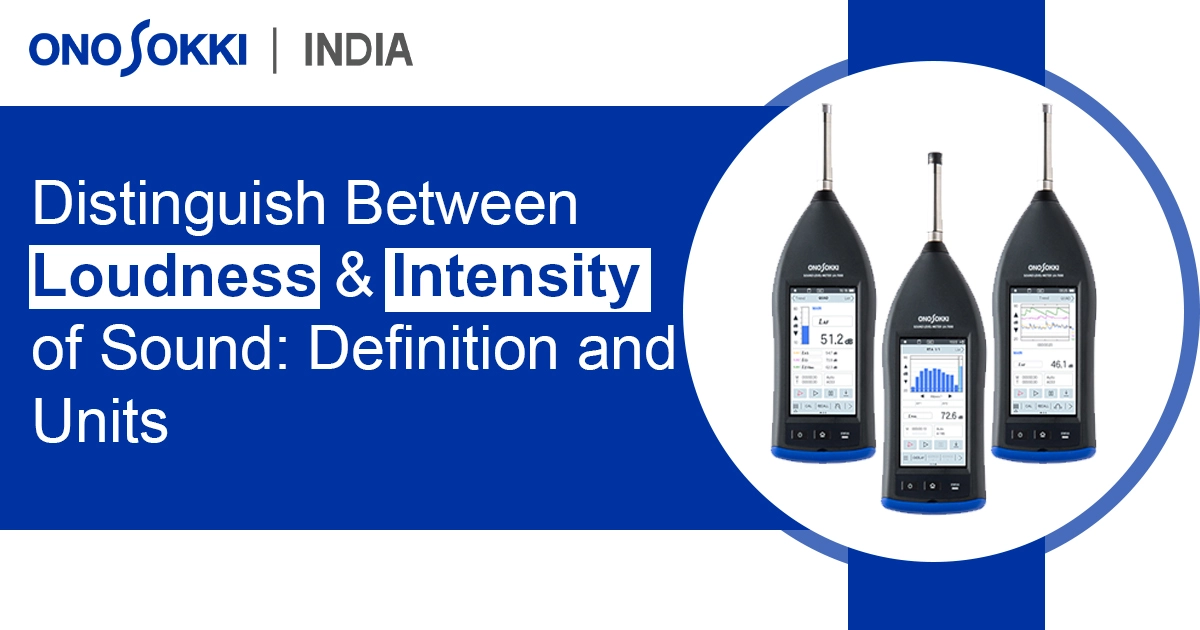



Sound is a part of our daily life from traffic noise and casual conversations to the loud rumble of industrial machines. But to truly understand how sound behaves, especially in technical fields, it’s important to distinguish between loudness and intensity of sound.
While they’re commonly mixed up, these two terms depict different features of sound. This blog post will clarify the Distinguish between sound intensity and loudness, discuss how loudness is quantified, and detail the units used for each. Whether you’re a learner, an audio expert, or simply inquisitive, this resource aims to improve your comprehension of how sound is perceived and gauged.
Sound intensity is all about the actual energy in a sound wave, How much sound power passes through a certain area in a given time. It’s a purely scientific measurement and doesn’t depend on how loud the sound seems to our ears.
It is mathematically expressed as:
Greater intensity means a sound wave carries more energy. It typically indicates a louder sound, but not always, Since loudness also involves human perception.
Loudness is a subjective perception of how strong or weak a sound appears to a human listener. It depends on both the intensity of the sound and how the human ear interprets it. For example, two sounds with the same intensity can be perceived as having different loudness if one is at a frequency to which our ears are more sensitive.
This is why loudness of sound is measured in decibels, a unit that takes into account how our ears respond to sound pressure levels.
The following table highlights the difference between loudness and intensity of sound in a structured manner:
| Aspect | Loudness | Intensity |
|---|---|---|
| Definition | Subjective perception of sound | Objective measure of sound energy |
| Nature | Psychological | Physical |
| Measured In | Decibels (dB) | Watts per square meter (W/m²) |
| Influenced By | Ear sensitivity, frequency, duration | Sound source power, distance, medium |
| Dependence on Listener | Yes | No |
Understanding these differences is critical in both theoretical studies and real-world applications.
So when we say loudness of sound is measured in decibels, we are referring to how the ear perceives variations in intensity, not the raw energy itself.
Measuring sound accurately is critical in many fields, including environmental monitoring, occupational health, industrial safety, and acoustic engineering. One of the most commonly used instruments for this purpose is the sound level meter.
At Ono Sokki, we offer a range of sound measurement instruments, including advanced sound level meters that provide accurate and reliable measurements for diverse applications. Our devices feature:
If you are looking to measure sound accurately in your environment, our sound measurement instruments provide the performance and reliability you need.
Understanding how to distinguish between loudness and intensity of sound is useful in:
In short, sound intensity is an objective measure, quantifying the energy in sound waves. Conversely, loudness is a subjective feeling, reflecting how our ears interpret that intensity. It’s crucial to remember that although we express loudness in decibels, it’s not the same as intensity, which we measure in watts per square meter.
By clearly understanding the difference between loudness and intensity of sound, professionals can make better decisions in sound measurement, noise control, product testing, and more. Whether you’re a student, researcher, or engineer, mastering these fundamentals is essential for working with sound in any capacity.